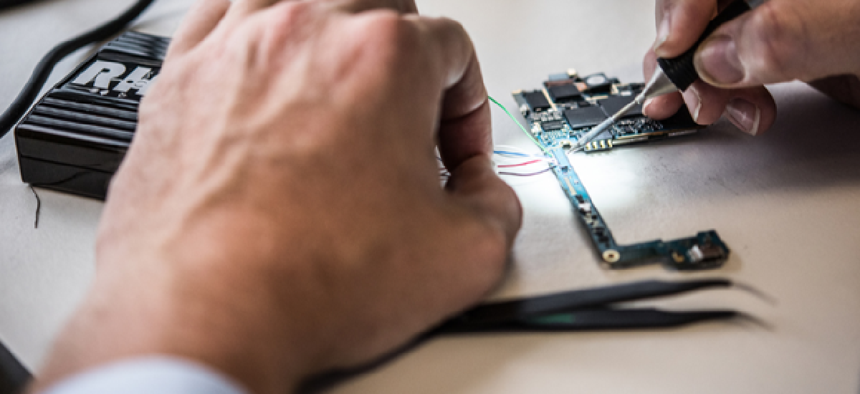DHS upgrades ICE forensics lab


Connecting state and local government leaders
The Immigration and Customs Enforcement forensics lab has beefed up its equipment and travel document library to better fight foreign terrorism.
To strengthen the nation in its fight against foreign terrorism, U.S. Immigration and Customs Enforcement recently upgraded its forensics lab.
The renovated ICE Homeland Security Investigations Forensic Laboratory in Tysons Corner, Va., includes a larger document reference library, an enhanced latent fingerprint lab and a new digital media evidence lab.
With the increasing sophistication of criminal and terrorist organizations, having a lab to better identify fraudulent documents “is crucial to our homeland security mission,” DHS Secretary Jeh Johnson said at the opening ceremony July 20.
The space, now occupying two levels, has been under renovation since 2012. It has grown from 30,000 to 40,000 square feet with the addition of a library holding over 300,000 real, counterfeit and altered travel and identity documents and other reference materials.
Examiners can compare counterfeit documents to the authentic specimens in the digitized reference library, which holds national and international documents that have been collected since the lab’s beginnings.
ICE also expanded its latent fingerprint section, which helps investigators lift fingerprints from weapons, computers, currency and other surfaces.
After evidence is processed, prints are compared to scans in various databases, including the FBI’s Next Generation Identification database and systems at the DHS’s Office of Biometric Identity Management and, most recently, the Department of Defense, according to Kenneth Woods, a fingerprint specialist at ICE.
Document examiners can use equipment like video spectral comparators, advanced digital microscopes and soft x-rays to capture images, spot identifiable details and check for radio frequency identification chips.
The newest addition to the lab is the digital media evidence section, equipped with the technology to enhance digital files from sources like surveillance footage, wiretaps and body microphones. The lab also has more exam rooms, additional lab equipment and three photo rooms with digital capture stations.
Although the lab is primarily responsible for forensic, research, training and law enforcement issues related to travel and identity documents in the United States, it also supports investigations of gang activity, drug and weapon trafficking, counterfeiting and bulk cash smuggling, human trafficking, child exploitation, terrorism and cybercrimes.
“We also support a number of federal and state agencies, helping them to identify vulnerabilities in their own travel documents,” Johnson said. The enhanced chemistry lab, for example, has special equipment to examine and run tests that find weak spots in visas, passports and state driver licenses. The lab recently helped Ohio strengthen the security of its birth certificates.
In 2015 alone, the lab processed more than 35,000 pieces of evidence, according to ICE. The lab was established in 1978 and became part of DHS in 2003.
NEXT STORY: DARPA’s all-machine cyber challenge




